The Everest Base Camp Trekking with an overnight stay at Base Camp is a truly remarkable adventure that immerses trekkers in the heart of the majestic Himalayan landscape. Over the course of 16 days, you will ascend to an awe-inspiring altitude of 5,364 meters, taking in breathtaking views and experiencing the vibrant culture of the Sherpa communities along the way. From acclimatization in the bustling Namche Bazaar to a visit to the revered Tengboche Monastery, this trek promises to create lasting memories in one of the world’s most iconic destinations. But the real highlight? Witnessing the stunning sunrise from Kala Patthar, a moment that truly captures the essence of this unforgettable adventure.
Key Points
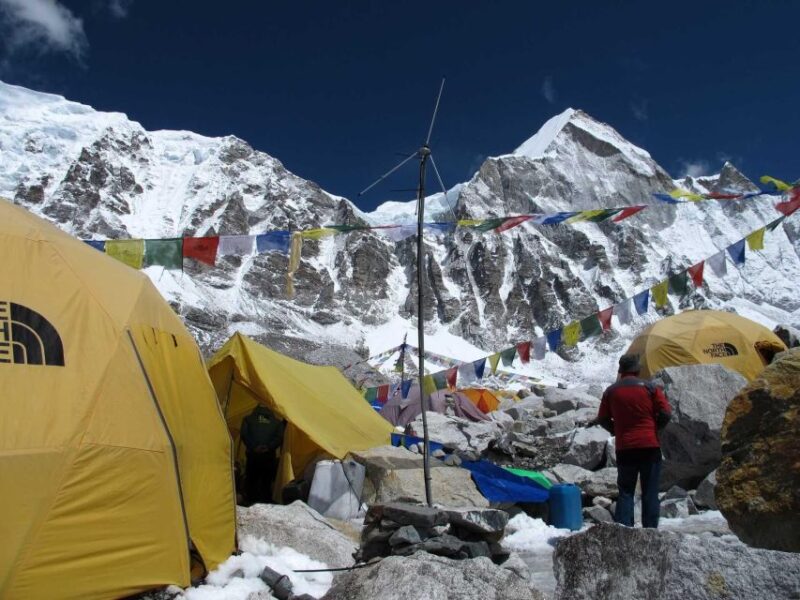
- This 16-day Everest trekking adventure includes an overnight stay at Everest Base Camp, situated at an altitude of 5,364 meters (17,594 feet).
- The trek explores the vibrant Sherpa cultural hub of Namche Bazaar and offers an opportunity to witness the awe-inspiring sunrise from Kala Patthar (5,545m/18,188ft).
- The package includes round-trip flights from Kathmandu to Lukla, the gateway to the Khumbu region, as well as hotel and airport transfers for convenience.
- Essential permits, a professional English-speaking trekking leader, and a first aid kit are provided to ensure the safety and well-being of participants.
- The trek is not recommended for individuals with physical limitations or mobility impairments, and babies under 1 year and individuals over 95 years old are advised against trekking.
Trek Overview and Highlights
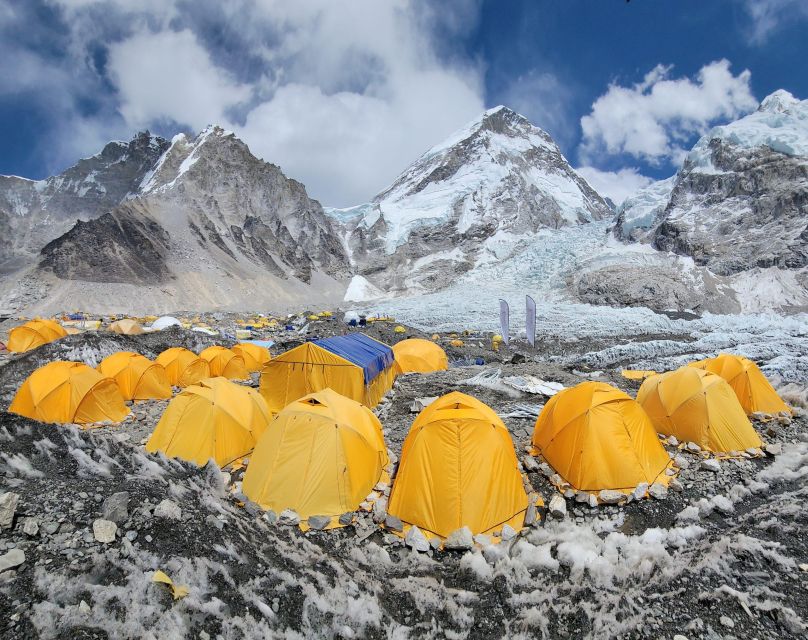
The Everest Base Camp trekking experience is a renowned 16-day adventure that takes adventurers on a captivating journey through the heart of the Himalayas, culminating in an overnight stay at the iconic Everest Base Camp situated at an elevation of 5,364 meters (17,594 feet).
Along the way, trekkers will explore the vibrant Sherpa cultural hub of Namche Bazaar, witness the awe-inspiring sunrise over Mount Everest from Kala Patthar (5,545m/18,188ft), and visit the serene Tengboche Monastery (3,860m/12,661ft).
This trek not only offers breathtaking mountain vistas but also provides an immersive cultural experience, allowing participants to connect with the local Sherpa communities and gain a deeper appreciation for the region’s rich heritage.
You can also read our reviews of more tours and experiences in Swayambhu.
Detailed Itinerary
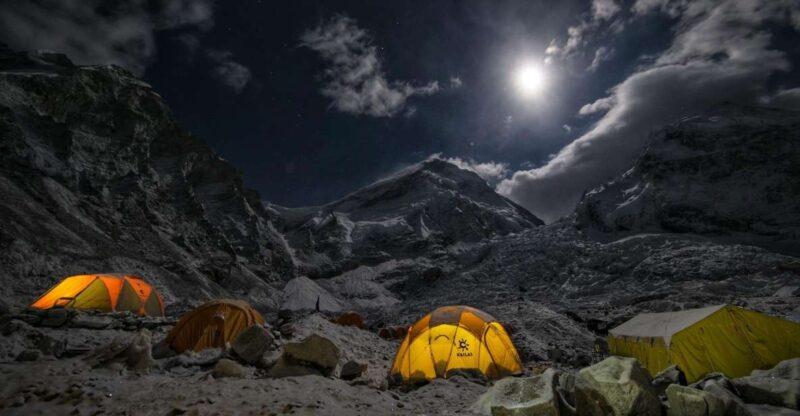
Commencing the trek, travelers fly to Lukla Airport (2,840m/9,316ft) – the gateway to the Khumbu region – before embarking on a journey to Phakding (2,610m/8,561ft), where they’ll spend their first night.
The following day, they’ll trek to Namche Bazaar (3,440m/11,284ft), a vibrant Sherpa trading hub, where they’ll acclimatize.
After exploring Namche, they’ll continue to Tengboche (3,860m/12,661ft), home to the renowned Tengboche Monastery.
As they gain altitude, trekkers will reach Dingboche (4,410m/14,465ft) and Lobuche (4,910m/16,105ft) before arriving at Gorakshep (5,181m/16,994ft), the final stop before the Everest Base Camp (5,364m/17,594ft), where they’ll spend a night.
Accommodation and Transfers
During the Everest Base Camp trekking experience, travelers are provided with a combination of comfortable accommodations and efficient transfers to ensure a seamless and enjoyable journey.
In Kathmandu, they’ll stay at the Hotel Kathmandu Suite Home or a similar 4-night accommodation, while the standard local lodge and teahouse accommodations are booked for the duration of the trek.
Travelers are also treated to round-trip flights from Kathmandu to Lukla, which is the starting point of the trek.
Airport and hotel transfers are included to make the overall experience as smooth and hassle-free as possible.
With these well-thought-out arrangements, trekkers can focus on the stunning landscapes and memorable moments that define the Everest Base Camp adventure.
Permits and Staff
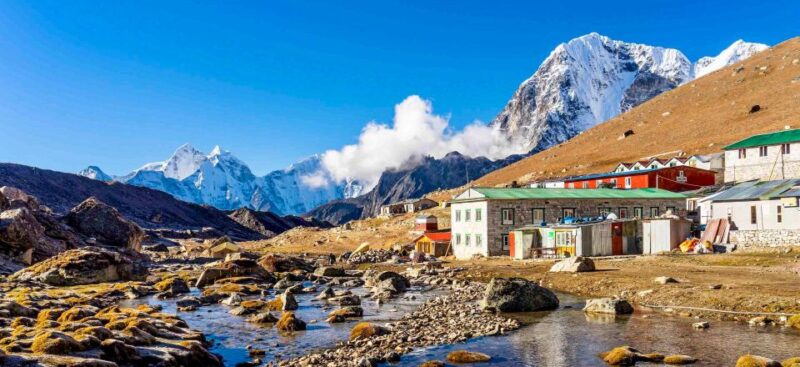
Proper permits are essential for trekkers embarking on the Everest Base Camp journey, which the tour operator secures on their behalf. Trekkers are required to obtain a TIMS (Trekkers’ Information Management System) card and National Park permits, necessitating the provision of two passport photos.
To guide and support the trekkers throughout their adventure, the tour provides a professional English-speaking trekking leader, an assistant guide, and experienced porters.
The tour package includes:
-
Airport and hotel transfers
-
Duffel bag, sleeping bag, down jacket, and trekking map
-
First aid kit and trip achievement certificate
-
Accidental insurance for the staff
-
Personalized attention and expertise to ensure a safe and memorable trek.
Included Equipment and Insurance
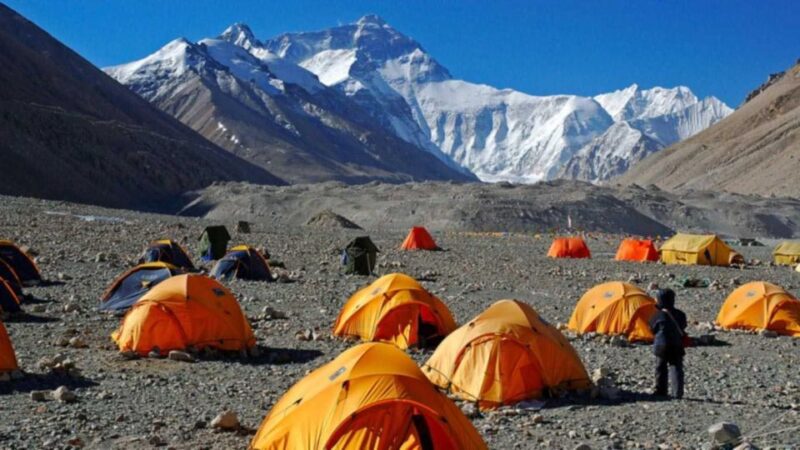
The tour package provides trekkers with essential equipment and gear, including a duffel bag, sleeping bag, and down jacket, along with a trekking map to aid in navigation.
Plus, the tour operators ensure the safety of their staff by including accidental insurance coverage.
Trekkers can rest assured that they’ll have the necessary items to comfortably and safely navigate the Everest region.
The first aid kit provided further enhances the safety aspect of the trek, as it allows the guides to address any minor medical issues that may arise during the journey.
These inclusions demonstrate the tour operator’s commitment to the well-being and preparedness of all participants.
- Seven World Heritage Day Tour- Private Kathmandu Sightseeing
- Nepal: 9 Nights-10 Days Tour
- Explore Nepal: 6-Day Road Tour Kathmandu, Nagarkot & Pokhara
- Kathmandu: Guided Private 7 UNESCO Heritage Sites Day Tour
- Kathmandu: Private Heritage Sightseeing Tour of UNESCO Sites
- Kathmandu: Private 7 UNESCO Heritage Sites Day Tour
Excluded Expenses
While the tour package includes essential equipment and covers staff insurance, there are several expenses that participants must cover independently. International airfares, meals during the trek, and travel/rescue insurance aren’t part of the package.
Plus, trekkers will need to account for personal expenses like:
- Phone calls
- Laundry
- Snacks and drinks
- Souvenirs
- Tips for guides and porters
Proper planning is crucial to ensure sufficient funds are set aside for these excluded costs, as they can significantly impact the overall budget for the Everest Base Camp trekking experience.
Suitability and Booking
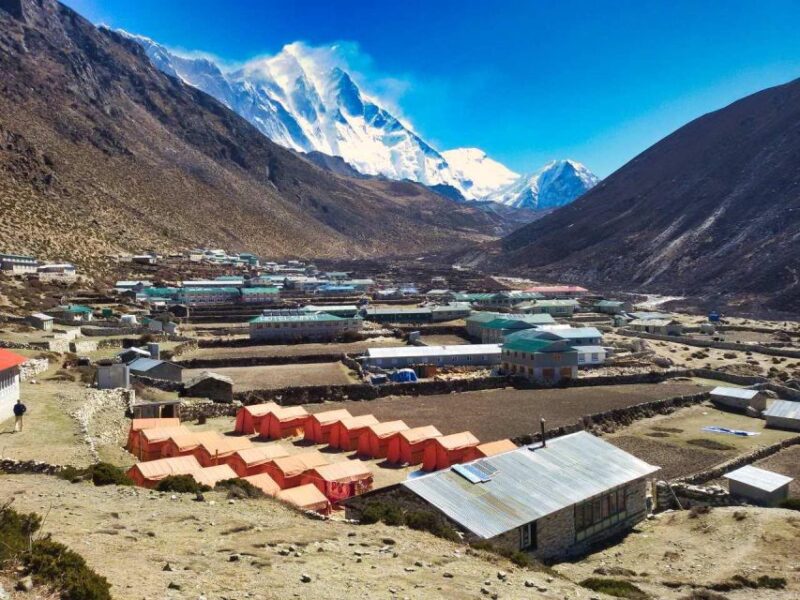
The Everest Base Camp trekking experience isn’t suitable for individuals with certain physical limitations or age restrictions, as the challenging terrain and high altitudes can pose significant risks.
For instance, the trek isn’t recommended for people with mobility impairments, wheelchair users, or the visually impaired, as the uneven paths and steep inclines may prove too challenging.
Plus, the trek isn’t suitable for babies under 1 year or individuals over 95 years old, as their bodies may not be able to withstand the physical demands.
To ensure a safe and enjoyable experience, potential trekkers should carefully consider their physical capabilities before booking this adventure.
The trek can be reserved now with a free cancellation option up to 24 hours prior to departure.
Frequently Asked Questions (FAQs)
Travelers interested in the Everest Base Camp trekking experience often have a range of questions, and addressing these concerns can help ensure a smooth and successful journey.
Frequently asked topics include:
-
Physical fitness requirements and training recommendations
-
Altitude sickness symptoms and prevention strategies
-
Weather conditions and seasonal considerations
-
Necessary gear and equipment for the trek
-
Safety protocols and emergency response procedures
Frequently Asked Questions
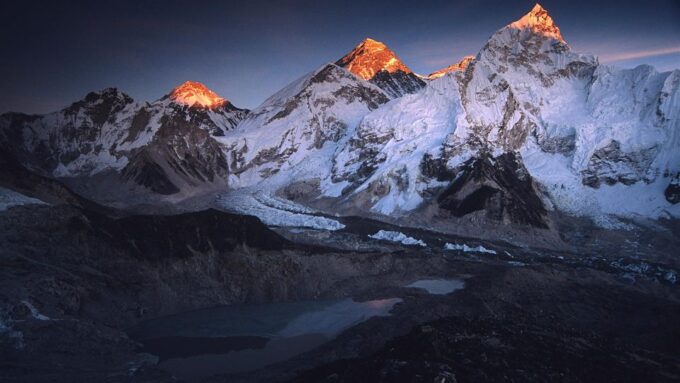
Can I Customize the Trekking Itinerary to My Preferences?
Yes, the trekking itinerary can be customized to accommodate the traveler’s preferences. The tour operator typically works with clients to adjust the duration, pace, and activities based on their specific needs and interests.
What Is the Average Group Size for This Trek?
The average group size for this trek is typically between 4 to 12 trekkers, though the exact number can vary. The group size allows for a more personalized experience while maintaining the safety and efficiency of the trek.
How Difficult Is the Trekking in Terms of Physical Fitness?
The trekking is quite physically demanding, requiring a high level of fitness. Hikers should be able to walk 5-7 hours per day on steep, rocky terrain at high altitudes. Proper training and preparation are essential for a successful and enjoyable trek.
Can I Store My Extra Luggage in Kathmandu During the Trek?
Yes, you can store your extra luggage in Kathmandu during the trek. The provider offers secure storage at the hotel or office, allowing you to travel light and focus on the trekking experience.
Is There Any Flexibility in the Departure Dates for This Trek?
Yes, there’s flexibility in the departure dates for this trek. The tour operator allows guests to choose their preferred start date, subject to availability. This provides travelers with the convenience to plan their journey around their schedule.
Recap
The Everest Base Camp Trek with an overnight stay at Base Camp offers an unparalleled adventure in the heart of the Himalayas.
This 16-day trek takes trekkers to an altitude of 5,364 meters, allowing them to witness breathtaking views, enjoy Sherpa culture, and create lasting memories in one of the world’s most iconic landscapes.
With a detailed itinerary, reliable accommodations, and expert staff, this trek is a must-do for adventurous travelers seeking an unforgettable Himalayan experience.
You can check if your dates are available here:More Tour Reviews in Swayambhu
- Kathmandu: Private 7 UNESCO Heritage Sites Day Tour
- Kathmandu: World Heritage Full Day Sightseeing Tour
- Kathmandu: Private 7 UNESCO Heritage Sites Day Tour
- Kathmandu: Private Day Tour of All UNESCO Heritage Sites
- Nepal: 6 Days Kathmandu, Pokhara & Nagarkot Tour By Flight
- Seven World Heritage Day Tour- Private Kathmandu Sightseeing
